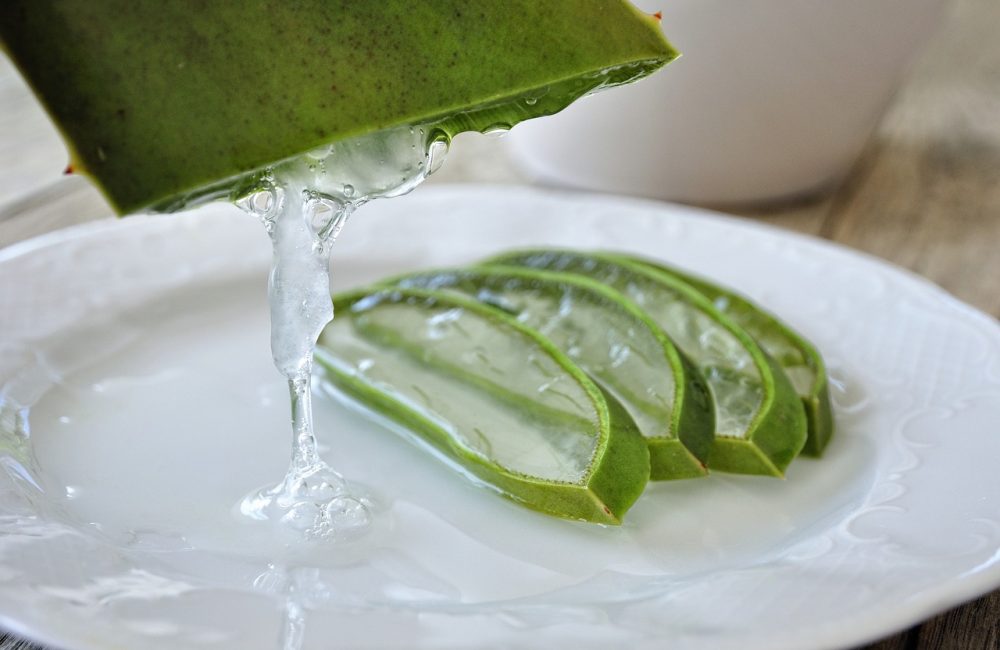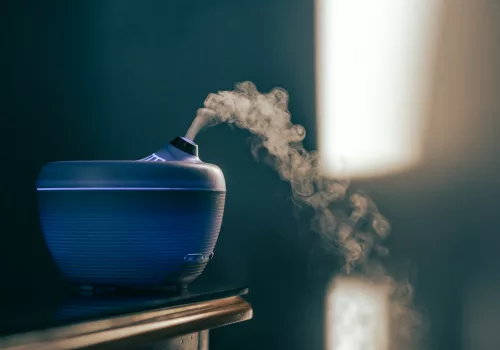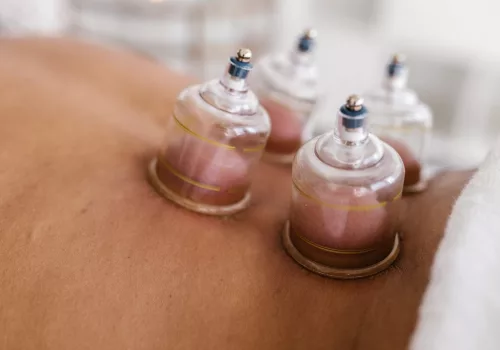Sunburns are a common and painful consequence of overexposure to the sun’s harmful ultraviolet (UV) rays. Whether you’re spending time at the beach, hiking, or simply outside during sunny weather, unprotected skin can quickly suffer the effects of sunburn, leading to redness, pain, and in more severe cases, blistering and peeling. The immediate search for relief is often focused on finding a remedy that soothes the burning sensation and helps speed up healing. One of the most popular natural remedies for this purpose is aloe vera gel.
Aloe vera has been celebrated for centuries for its medicinal properties, particularly for its ability to treat skin conditions. Known for its cooling, hydrating, and healing effects, aloe vera gel is a go-to solution for many when it comes to treating sunburns. But is aloe vera really effective in treating sunburns, and how does it work? In this detailed guide, we’ll explore why using aloe vera gel is good for sunburn relief, delve into the scientific evidence behind its effectiveness, and provide tips on how to use it properly for maximum benefits.
What Makes Aloe Vera Effective for Sunburn Relief?
Aloe vera is a succulent plant that stores water in its thick, fleshy leaves. Inside these leaves is a clear, gel-like substance that contains more than 75 active compounds, including vitamins, minerals, enzymes, amino acids, and antioxidants. These components work together to provide a wide range of health benefits, particularly when applied topically to the skin. Here are some of the primary reasons why aloe vera gel is effective in treating sunburns:
1. Cooling and Soothing Properties
One of the most immediate benefits of aloe vera gel for sunburn relief is its cooling effect. Sunburns cause the skin to become hot, inflamed, and irritated, and the application of cool aloe vera gel provides instant relief by reducing the sensation of heat and discomfort. Aloe vera gel is made up of over 99% water, which not only hydrates the skin but also helps draw heat away from the affected area, providing a soothing and calming effect.
This cooling sensation is similar to applying a cold compress to sunburned skin. By reducing the heat and cooling the inflamed area, aloe vera helps to mitigate the severity of the burn and reduce immediate discomfort. This cooling effect makes aloe vera an ideal first step in treating sunburns as it provides rapid relief from pain and burning.
2. Anti-Inflammatory Action
One of the primary reasons aloe vera gel is effective for sunburn relief is its powerful anti-inflammatory properties. When the skin is overexposed to UV rays, it triggers an inflammatory response as the body tries to repair the damage caused by the sun. This inflammation is responsible for the redness, swelling, and pain associated with sunburns.
Aloe vera contains compounds such as bradykinase, an enzyme that helps reduce excessive inflammation. Bradykinase works by inhibiting the inflammatory process and promoting faster recovery. In addition, aloe vera contains salicylic acid, a compound that also has anti-inflammatory and analgesic (pain-relieving) properties. By reducing inflammation at the cellular level, aloe vera helps minimize swelling and redness, promoting faster healing and reducing the overall severity of the sunburn.
By addressing inflammation early, aloe vera gel can also prevent the development of more serious sunburn-related complications, such as blistering and infection. For this reason, applying aloe vera as soon as possible after getting a sunburn is an excellent strategy for reducing inflammation and speeding up the recovery process.
3. Hydration and Moisturizing Benefits
One of the most significant challenges when dealing with sunburn is the dehydration and dryness that often follow sun exposure. Sunburned skin tends to lose moisture rapidly, leaving it feeling dry, tight, and prone to peeling. Aloe vera gel is a powerful natural moisturizer that helps restore lost hydration to the skin.
When applied to sunburned areas, aloe vera penetrates the skin’s surface, helping to replenish moisture and prevent dehydration. This hydration is critical in preventing peeling, which can occur as the skin begins to heal and shed damaged cells. Additionally, the moisturizing properties of aloe vera help maintain the skin’s elasticity, preventing cracking or flaking that can worsen the discomfort associated with sunburn.
Aloe vera’s high water content also makes it an excellent remedy for maintaining the skin’s barrier function, which is essential for protecting against external irritants and promoting optimal healing conditions. Well-hydrated skin is better able to repair itself, and the moisture provided by aloe vera plays a key role in ensuring that the damaged skin recovers more quickly.
4. Antioxidant Protection and Healing Properties
Aloe vera is packed with antioxidants, including vitamins A, C, and E, which are essential for promoting skin health and protecting against further damage. After a sunburn, the skin is particularly vulnerable to oxidative stress caused by free radicals—unstable molecules that can damage skin cells and accelerate aging. The antioxidants in aloe vera help neutralize free radicals, preventing further damage to the skin and promoting faster recovery.
In addition to its antioxidant properties, aloe vera contains compounds like glucomannan, which helps stimulate collagen production. Collagen is a protein that plays a critical role in the skin’s structure and healing process. By boosting collagen production, aloe vera not only helps the skin recover from the damage caused by the sun but also supports the regeneration of healthy, new skin cells. This makes aloe vera an effective remedy not just for soothing sunburns, but also for helping the skin rebuild and repair itself after damage.
The ability of aloe vera to promote wound healing is well documented in scientific studies. Research has shown that aloe vera speeds up the healing of burns and other skin injuries by promoting the growth of new tissue and improving circulation to the affected area. This makes it an ideal treatment for minor burns, including sunburns, as it helps the skin heal faster and reduces the risk of scarring.
5. Antibacterial and Antiseptic Properties
Severe sunburns can sometimes lead to blisters or broken skin, which increases the risk of infection. Aloe vera has natural antibacterial, antiviral, and antiseptic properties that can help prevent infection in sunburned skin, particularly if blisters form. These properties come from compounds such as saponins and barbaloin, which work to protect the skin from bacterial contamination.
By applying aloe vera gel to sunburned skin, you can help create a protective barrier that shields the skin from harmful bacteria and viruses, reducing the risk of complications and allowing the skin to heal more effectively.
Scientific Evidence Supporting Aloe Vera for Sunburn Relief
The use of aloe vera gel for sunburn relief is not only supported by centuries of traditional use but also backed by scientific research. Studies have demonstrated that aloe vera is effective in treating burns and skin conditions due to its anti-inflammatory, antioxidant, and hydrating properties.
A study published in the Journal of Clinical, Cosmetic and Investigational Dermatology examined the effects of aloe vera gel on first and second-degree burns, including sunburns. The study found that aloe vera significantly reduced the healing time of burns compared to a placebo. The cooling and anti-inflammatory properties of aloe vera were shown to provide relief from pain while also promoting faster tissue regeneration.
Another study published in the Indian Journal of Dermatology highlighted aloe vera’s wound-healing capabilities, particularly its ability to stimulate epithelial cell regeneration—the process by which the outer layer of the skin repairs itself. The study also noted aloe vera’s ability to reduce redness and swelling, making it an ideal remedy for soothing inflamed skin caused by sun exposure.
In addition, a review in the Burns Journal noted that aloe vera’s ability to increase blood flow to damaged skin and stimulate collagen production made it highly effective in treating minor burns, including sunburns. The review concluded that aloe vera gel is a safe, effective, and widely accessible treatment for sunburn relief.
How to Use Aloe Vera for Sunburn Relief
To maximize the benefits of aloe vera for sunburn relief, it’s important to use it correctly. Here are some tips on how to apply aloe vera gel for the best results:
1. Use Pure Aloe Vera Gel
For the most effective results, use pure aloe vera gel directly from the plant. If you have an aloe vera plant at home, simply cut a leaf and apply the fresh gel directly to the sunburned area. This ensures that you’re using a natural product free of additives, fragrances, or chemicals that could irritate sensitive skin.
If you don’t have access to a plant, you can purchase store-bought aloe vera gel. Look for products that contain a high percentage of aloe vera (ideally 100%) and avoid those with added ingredients like alcohol or artificial fragrances, which can dry out the skin.
2. Apply Frequently
Aloe vera gel should be applied liberally and frequently to sunburned skin. For the best results, apply the gel several times a day, especially when the skin starts to feel dry or tight. Reapplying aloe vera gel ensures that the skin remains hydrated and that the healing compounds in the gel continue to work throughout the day.
3. Keep Skin Protected
While aloe vera is effective in treating sunburns, it’s essential to protect your skin from further UV damage. Avoid exposing sunburned skin to the sun, and wear sunscreen and protective clothing if you need to be outdoors. Preventing additional damage will give your skin the time it needs to heal and reduce the risk of long-term damage or scarring.
4. Combine with Other Moisturizers
For added hydration and healing, consider combining aloe vera gel with other natural moisturizers like coconut oil, shea butter, or jojoba oil. These moisturizers can help lock in the moisture provided by aloe vera and keep the skin soft and supple as it heals.
Are There Any Risks to Using Aloe Vera Gel for Sunburn?
For most people, using aloe vera for sunburn relief is safe and effective. However, some individuals may be allergic to aloe vera or certain compounds in the plant. If you have never used aloe vera before, it’s a good idea to do a patch test on a small area of skin to ensure you don’t have an allergic reaction. If you experience itching, redness, or swelling, discontinue use.
Additionally, aloe vera is best suited for treating mild to moderate sunburns. If you experience a severe sunburn with blistering or open wounds, it’s important to seek medical attention to avoid complications such as infection or scarring.
Conclusion
In conclusion, aloe vera gel is an excellent natural remedy for sunburn relief, thanks to its cooling, anti-inflammatory, hydrating, and healing properties. It provides immediate relief from pain and burning, reduces inflammation, and promotes faster skin recovery. With its rich array of antioxidants, vitamins, and healing compounds, aloe vera gel can help soothe sunburned skin and protect it from further damage.
Using aloe vera gel regularly after sun exposure can not only treat existing sunburns but also support overall skin health, helping you maintain hydrated, supple, and healthy skin. Whether you use it directly from the plant or purchase a high-quality aloe vera gel product, aloe vera can be a valuable addition to your sunburn care routine, ensuring faster healing and long-lasting relief. Just remember to apply it frequently, protect your skin from further UV exposure, and stay hydrated to support the healing process.






